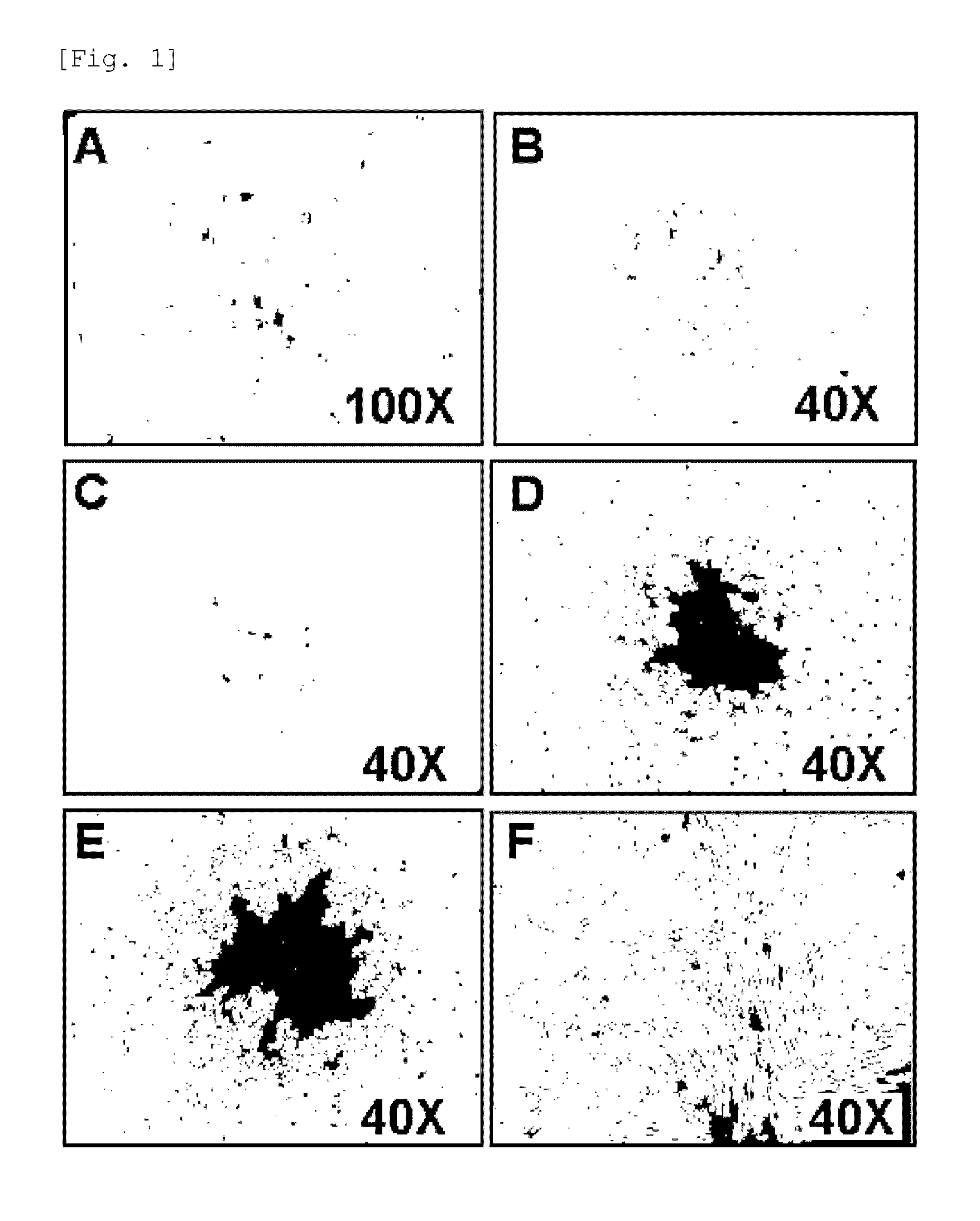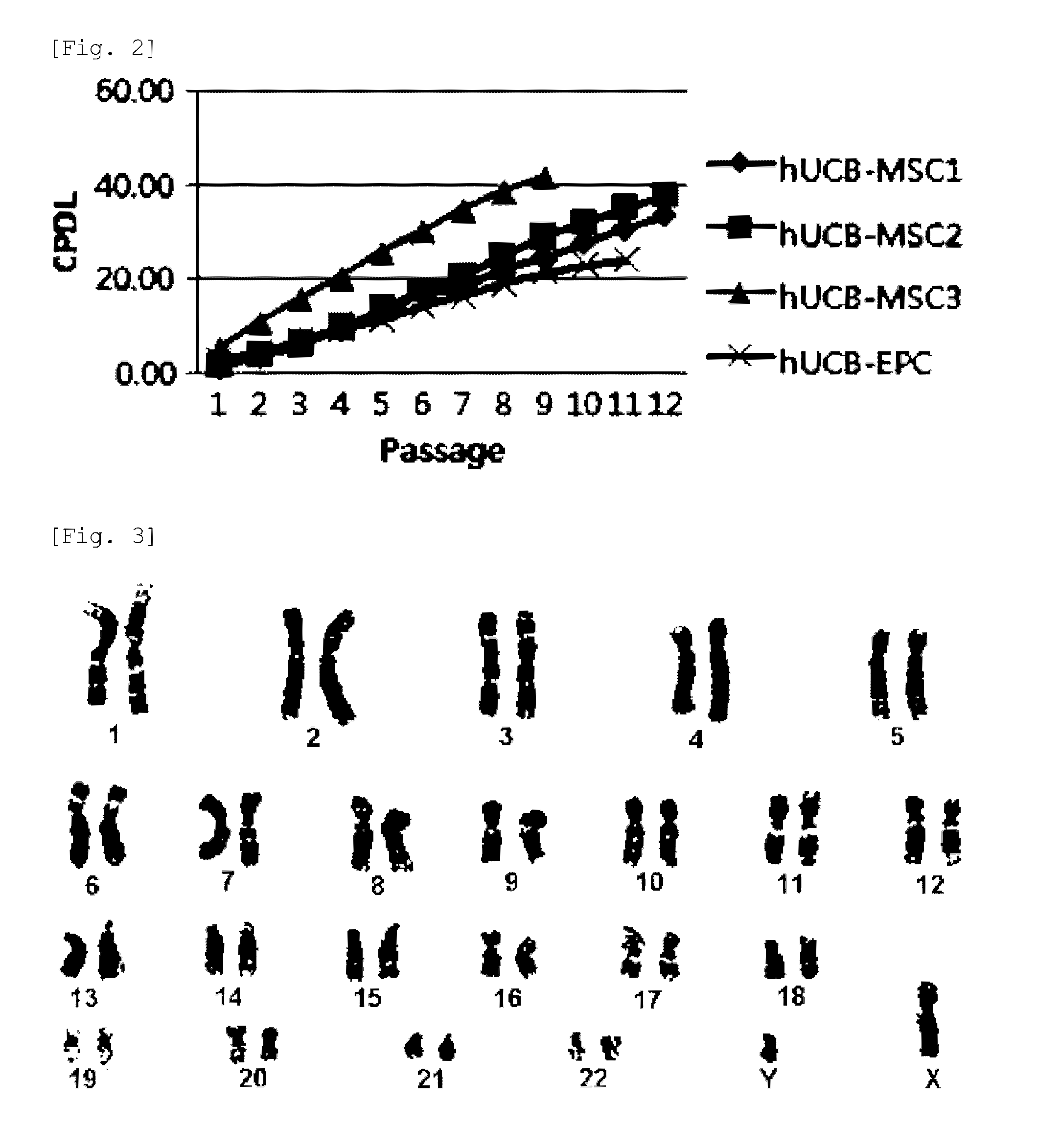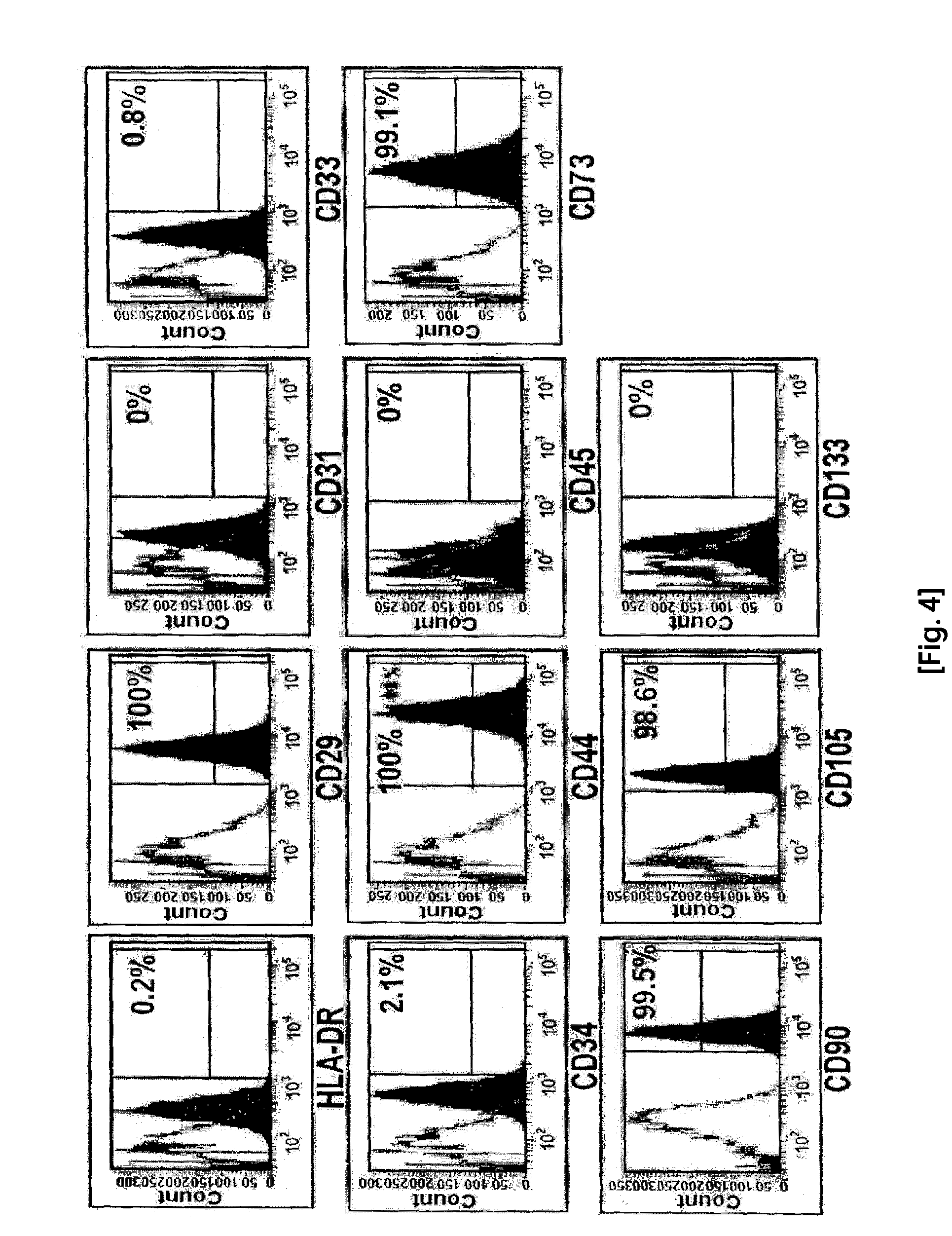Isolating method for umbilical cord blood-derived pluripotent stem cells expressing znf281
a technology of umbilical cord blood and stem cells, which is applied in the direction of embryonic cells, cardiovascular disorders, drug compositions, etc., can solve the problems of reducing the isolation rate to 20% or less, the mechanism of cell development or how to grow and proliferate, and the difficulty of isolating mesenchymal stem cells from umbilical cord blood
- Summary
- Abstract
- Description
- Claims
- Application Information
AI Technical Summary
Benefits of technology
Problems solved by technology
Method used
Image
Examples
example 1
Culturing, Proliferation and Karyotype Analysis of the Umbilical Cord Blood-Derived Pluripotent / Multipotent Stem Cells
[0061]Full term UCB samples (n=20) were collected immediately after delivery with the informed consent of the mothers. The full term UCB was mixed with HetaSep (Stem cells Technologies INC, Vancouver, BC) to deplete erythrocyte counts. Then, monocytes were obtained by a typical Ficoll density gradient centrifugation. The monocytes were seeded at a density of 1×105˜8 cells / well on 6-well plates coated with 0.1 mg / ml-1 mg / ml fibronectin and maintained in SNU-1 or EGM-2 (Lonza) supplemented with EGM-2 SingleQuots containing 20% FBS. The EGM-2 SingQouts contained heparin, Ascorbic acid, rhEGF, hydrocortisone, VEGF, rhFGF-B, R3-IGF-1, and GA-1000. The monocytes which still remained non-adherent three days after culturing were removed while the medium was replaced with a fresh one every two or three days.
[0062]The adherent cells were observed to form colonies, exhibiting s...
example 2
Analysis of Surface Antigen of the Umbilical Cord Blood-Derived Pluripotent / Multipotent Stem Cells
[0067]Flow cytometry was carried out to analyze the characteristics of the cells suspended in media. For phenotyping cell surface antigens, cells harvested after 3-4 passages were stained with a fluorescein isothiocyanate (FITC)- or phycoerythrin (PE)-conjugated antibody, and analyzed with FACSAria (Becton Dickinson, NY).
[0068]The surface antigens used to analyze the characteristics of the umbilical cord blood-derived pluripotent / multipotent stem cells (partially pluripotent / multipotent stem cell) isolated in the present invention included CD10 (T cell marker), CD14 (monocyte marker), CD24 (epithelial cell marker), CD29 (monocyte marker), CD31 (endothelial cell marker), CD34 (hematopoietic stem cell marker), CD44 (mesenchymal stem cell marker), CD45 (non-hematopoietic stem cell marker), CD51 / 61 (osteoclast marker), CD73 (mesenchymal stem cell marker), CD90 (mesenchymal stem cell marker)...
example 3
Expression Pattern of ZNF281 and Core Transcription Factor in the Umbilical Cord Blood-Derived Pluripotent / Multipotent Stem Cells
[0069]ZNF281 (Zinc finger protein 281) is one of the core transcription factors of ESC (Wang J et al. (2006) Nature 444, 364-368). ZNF281, also called ZBP-99, contains four Kruppel-type zinc fingers that collectively share 91% amino acid sequence similarity and 79% sequence identity with those found in ZBP-89. In addition, there are highly conserved amino acid sequences in the carboxy-terminal segments of the two genes. The predicted open reading frame of ZNF281 cDNA encodes a 99-kDa protein. EMSA (Electrophoretic mobility shift as say) showed that ZNF281 protein specifically binds to the GC-rich promoter elements of GASTRIN and ORNITHINE DECARBOXYLASE genes (Law D J et al. (1999) Biochem Biophys Res Commun 262, 113-120; Lisowsky T et a 1. (1999) FEBS Lett 453, 369-374). ZNF281 was identified as a c-MYC-associated protein by mass spectral multidimensional ...
PUM
| Property | Measurement | Unit |
|---|---|---|
| density | aaaaa | aaaaa |
| temperature | aaaaa | aaaaa |
| three-dimensional | aaaaa | aaaaa |
Abstract
Description
Claims
Application Information
 Login to View More
Login to View More - R&D
- Intellectual Property
- Life Sciences
- Materials
- Tech Scout
- Unparalleled Data Quality
- Higher Quality Content
- 60% Fewer Hallucinations
Browse by: Latest US Patents, China's latest patents, Technical Efficacy Thesaurus, Application Domain, Technology Topic, Popular Technical Reports.
© 2025 PatSnap. All rights reserved.Legal|Privacy policy|Modern Slavery Act Transparency Statement|Sitemap|About US| Contact US: help@patsnap.com



